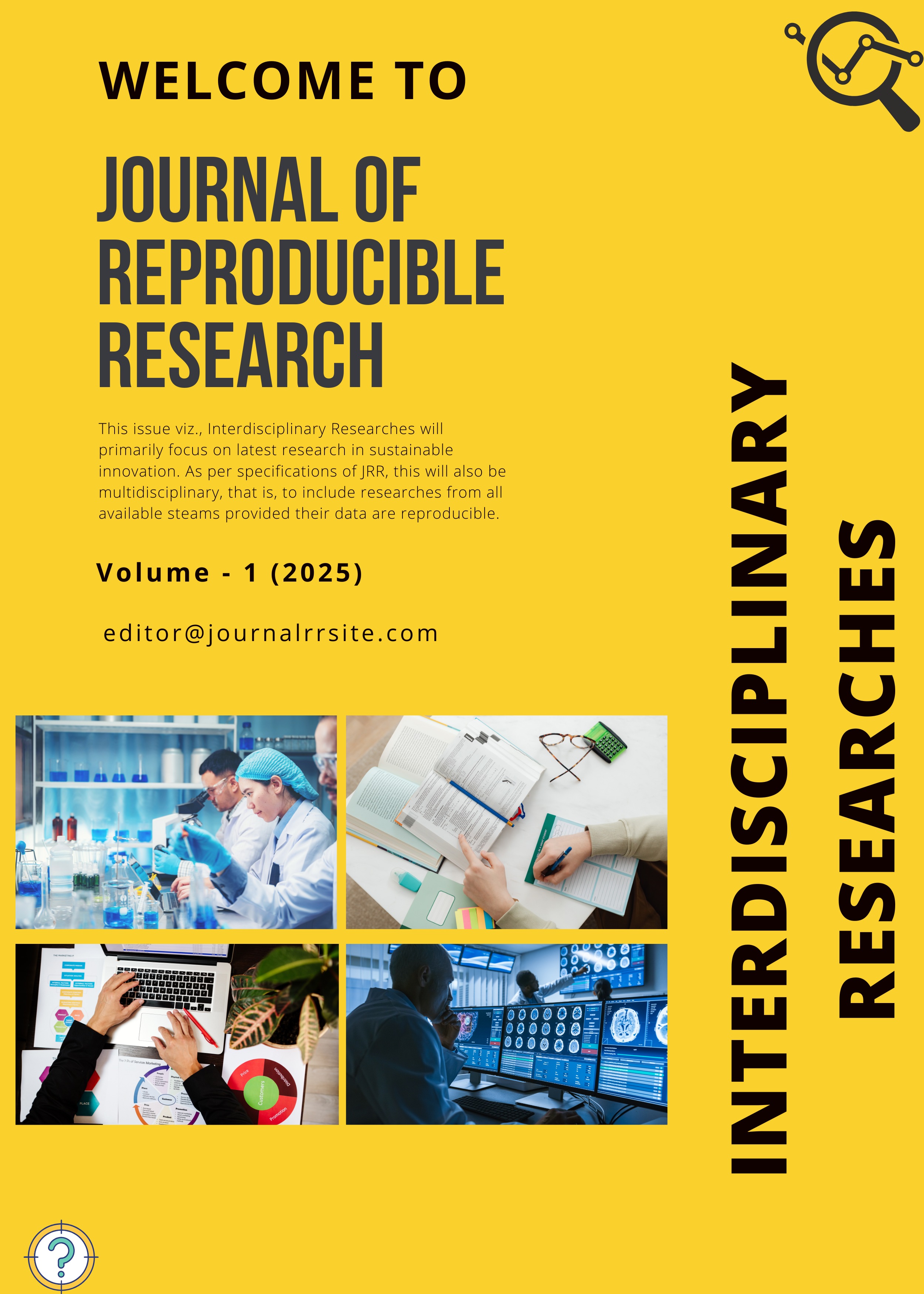Medical and Dental Students’ Perceptions of Digital and Traditional Anatomy Dissection: A Comparative Study at MAHSA University
Abstract
This study explores the shift from traditional cadaver dissection to digital methods in anatomy education at MAHSA University, focusing on the perceptions of 860 medical (MBBS) and dental (DDS) students. Prompted by the COVID-19 pandemic, the research aimed to assess student preferences, the effectiveness of digital tools, and the challenges involved compared to conventional practices. Using a cross-sectional survey and SPSS analysis, five key factors were identified from 26 variables, covering technological, contextual, pedagogical, and course-related issues. Results showed that over half of the students supported integrating digital tools, especially for improving structure visualization, offering flexible access to content, and aiding exam preparation. About 35% of students remained neutral, reflecting uncertainty or mixed opinions. While many acknowledged the discomforts of cadaver dissection—such as exposure to chemicals and ethical concerns—most were hesitant to fully abandon traditional methods, valuing the hands-on experience and deeper understanding it provides. The findings offer valuable insights for educators and curriculum developers, emphasizing the need to balance technological innovation with essential practical training in anatomy education.
References
Ahmed, A. R., & Bhatti, M. A. (2018). Comparison of perceptions of medical and dental students towards anatomy dissection. Journal of Taibah University Medical Sciences, 13(3), 254–258.
Alharbi, M. M., Aldosari, M. A., & Alanazi, S. S. (2023). Medical students’ perception of virtual anatomy learning: A cross sectional study. BMC Medical Education, 23, Article 187. https://doi.org/10.1186/s12909-023-04242-w
Ali, A., Dhingra, K., & Lalit, M. (2021). Cadaveric dissection vs virtual dissection: Perception of medical students in India. Indian Journal of Clinical Anatomy and Physiology, 8(1), 23–27.
Aliaga, M., & Gunderson, B. (2002). Interactive statistics. Sage Publications.
Alotaibi, M. N., Albalawi, H. A., & Alharthi, M. S. (2019). Comparison of perception of anatomy between medical and dental students. Anatomical Sciences Education, 12(4), 376–383. https://doi.org/10.1002/ase.1846
Barber, C. M., Shearer, J. M., & Allen, P. (2022). Evaluating anatomy education: Developing valid instruments to assess learner perception. Medical Teacher, 44(5), 521–528. https://doi.org/10.1080/0142159X.2021.1995259
Birkett, M. A., & Day, S. J. (1994). Internal pilot studies for estimating sample size. Statistics in Medicine, 13(23–24), 2455–2463.
Bonett, D. G., & Wright, T. A. (2015). Cronbach’s alpha reliability: Interval estimation, hypothesis testing, and sample size planning. Journal of Organizational Behavior, 36(1), 3–15. https://doi.org/10.1002/job.1960
Boslaugh, S. (2012). Pearson correlation coefficient. In Encyclopedia of Epidemiology (Vol. 2, pp. 740–741). SAGE.
Department of Health and Social Care. (2020). Coronavirus: action plan. A guide to what you can expect across the UK. Retrieved from https://www.gov.uk/government/publications/coronavirus-action-plan
Fauvet, J. (1964). History of medicine. Zaxaropoulos.
Fatima, A., Shaikh, N. A., & Khan, S. (2023). Gender differences in perception of virtual anatomy tools among South Asian students. BMC Medical Education, 23(1), 145.
Finkelstein, P., Tat, J., & Wang, T. (2023). Re evaluating cadaver dissection in modern medical curricula. Medical Education Online, 28(1), Article 2174872.
Fowler, F. J. (2014). Survey research method (5th ed.). University of Massachusetts, Center for Survey Research.
IITMS. (2023). CBT exam: What is computer-based test | Benefits of computer-based test. Retrieved from IITMS website.
Kumar, S., Singh, S., & Sharma, R. (2020). Perceptions of digital versus traditional anatomy education among Indian students. Journal of Medical Education and Curricular Development, 7, 2382120520959763.
Lee, K., & White, R. (2021a). Importance of cadaveric dissection in learning gross anatomy. International Journal of Medical Education, 52(4), 210–218.
Lee, K., & White, R. (2021b). Pathology encountered during cadaver dissection provides an opportunity. Austin Journal of Anatomy, 1(1), 27–32.
Lee, K., & White, R. (2021c). The human behind the body: A medical student’s experience with cadaveric dissection. International Journal of Medical Education, 52(4), 210–218.
Nnodim, J. O. (1990). Learning human anatomy: by dissection or from prosections? Medical Education, 24(4), 389–395.
Nwachukwu, C. A., Okoye, I. J., & Madu, E. C. (2022). The evolution of anatomy teaching: Innovations and challenges in a digital era. Anatomical Sciences Education, 15(4), 672–680.
Paech, D., Götz, M., & Fischer, M. R. (2017). Hybrid anatomy teaching: Combining digital resources with traditional methods. Anatomical Sciences Education, 10(6), 584–592.
Park, K. (n.d.). The criminal and the saintly body: Autopsy and dissection in Renaissance Italy.
Pilcher, L. S. (1906). The Mondino myth. Medical Library History Journal, 4, 311–331.
Reddy, L. S., & Kulshrestha, P. (2019). Performing the KMO and Bartlett’s Test for factors estimating warehouse efficiency, inventory and customer contentment for e retail supply chain. International Journal for Research in Engineering Application & Management, 5(9), 2454–9150.
Renaiss, Q. (1994). [Title unclear]. Renaissance Quarterly, 47, 1–33. https://doi.org/10.2307/2863109
Rengachary, S. S., Colen, C., Dass, K., & Guthikonda, M. (Year unknown). Development of anatomic science in the late Middle Ages: The roles played by Mondino de Liuzzi and Guido da Vigevano.
Van Verleysen, M., & Verleysen, M. (2001). Principal component analysis (PCA). Statistics, September, 1–8.
Wang, J., Li, W., Dun, A., Zhong, N., & Ye, Z. (2024). 3D visualization technology for learning human anatomy among medical students and residents: A meta and regression analysis. BMC Medical Education, 24, Article 461.
Wezeman, F. H. (2008). The essential companion to cadaver dissection. Loyola University Chicago Stritch School of Medicine.
Wilson, L. (1987). William Harvey’s prelectiones: The performance of the body in the Renaissance theater of anatomy. Representations, 17(1), 62–95. https://doi.org/10.1525/rep.1987.17.1.99
World Health Organization. (2020). Coronavirus disease (COVID 2019) situation reports. Retrieved from https://www.who.int/emergencies/diseases/novel-coronavirus-2019/situation-reports
Zhao, J., Xu, X., Jiang, H., & Ding, Y. (2020). The effectiveness of virtual reality based technology on anatomy teaching: A meta analysis of randomized controlled studies. BMC Medical Education, 20, Article 127.
Downloads
Published
How to Cite
License
Copyright (c) 2025 Journal of Reproducible Research

This work is licensed under a Creative Commons Attribution 4.0 International License.
Copyright of the article belongs to Journal of Reproducible Research (JRR) once the paper is ACCEPTED for publication. Author(s) agrees to this terms, during submission.





